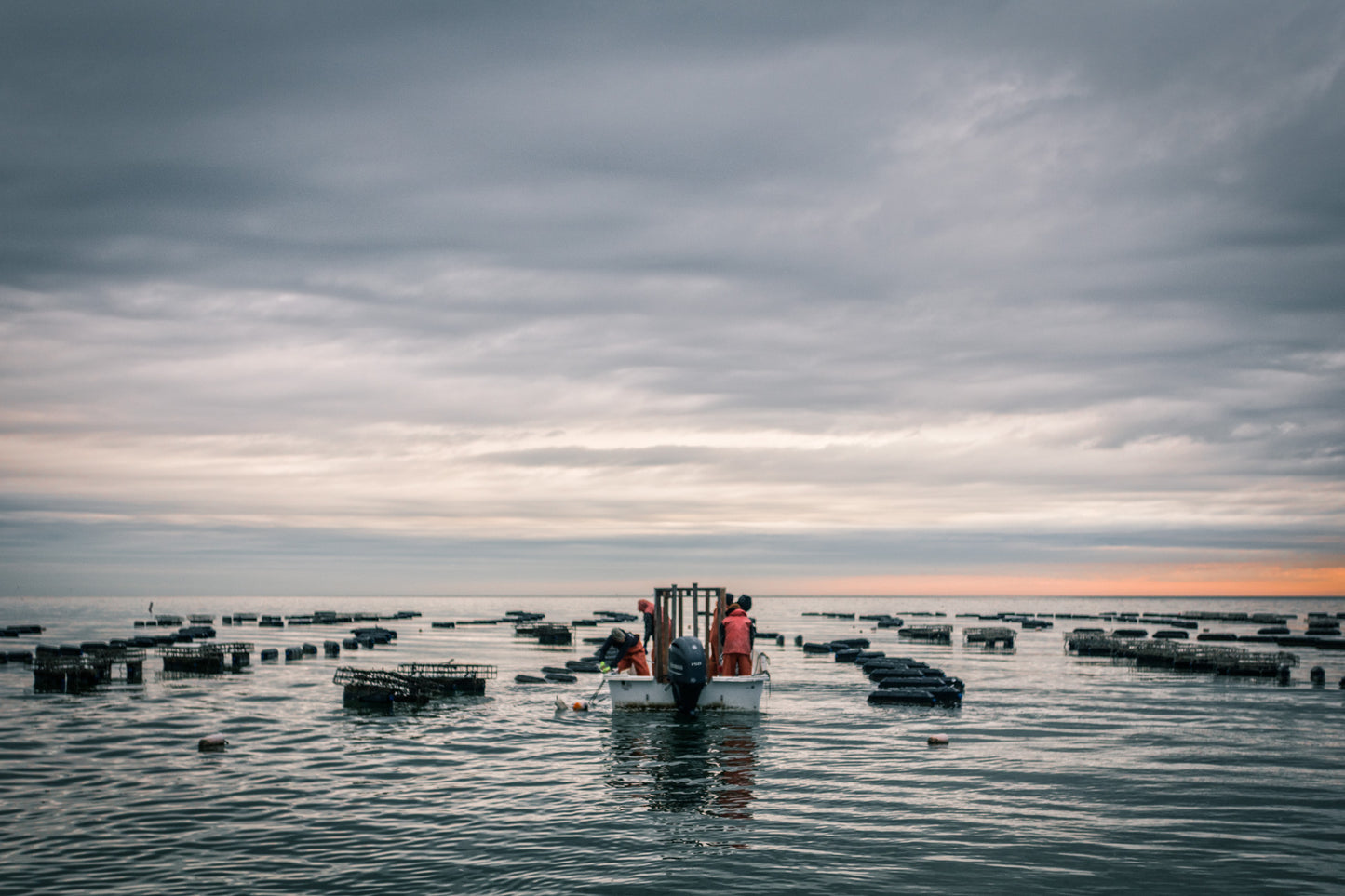
There are a lot of myths around what oysters eat and how it affects their flavor. We’re going to bust some common oyster myths and show you how sustainable oyster farming creates a halo effect of benefits for the entire ecosystem.
Some people believe oysters are bottom feeders, which is only partially true. They are technically detritivores, however top-water oysters like ours actually feed on phytoplankton and other small bits of algae floating in the water. Oysters have an incredible ability to actually ‘clean’ areas of water. They feed by filtering water over their gills, and some specifics filter up to 50 gallons of water a day.
This time-lapse is a great example of their filtering abilities.
Oyster diet determines their flavor, growth rates, seasonality, shell strength and even their color. For example, some algae are harmful to humans. Oysters can also starve if they’re in an area full of the wrong kind of algae. As a result, we work to preserve our farm waters and create ecosystems that provide the right conditions and nutrients for our oysters.
Surprisingly, oysters are pretty picky eaters. Bob Rheault, Executive Director of the East Coast Shellfish Growers Association elaborates, “Even as a dust-speck sized larvae they do this. The oyster sorts identically-sized algal particles (say Isochrysis and Chlorella) with 90% efficiency, even when mixed with a soup of thick silt. The Isochrysis goes into the gut and the Chlorella and silt goes into the pseudofeces (rendering it bright green!). I have done this with radiotracers and the degree of efficiency is remarkable. It is one reason why the American oyster is so adaptable and can survive in high silt loaded waters while many other organisms struggle and suffocate with fouled gills.”

This filtering ability is hugely important to the ecosystem. They provide a critical link in the food cycle, removing algal biomass and creating pseudofeces that then becomes food for other organisms on the oyster reefs.
Oyster shells also create a hard bottom that creates a habitat for many bay organisms. Barnacles, mussels and anemones all need hard bottoms to grow, and some animals use discarded shells as shelter from predators.
By maintaining a healthy farm population, not only are we able to deliver delicious and fresh oysters to your door, but we’re also creating a healthier bay for future generations to enjoy.
← Older post Newer post →
